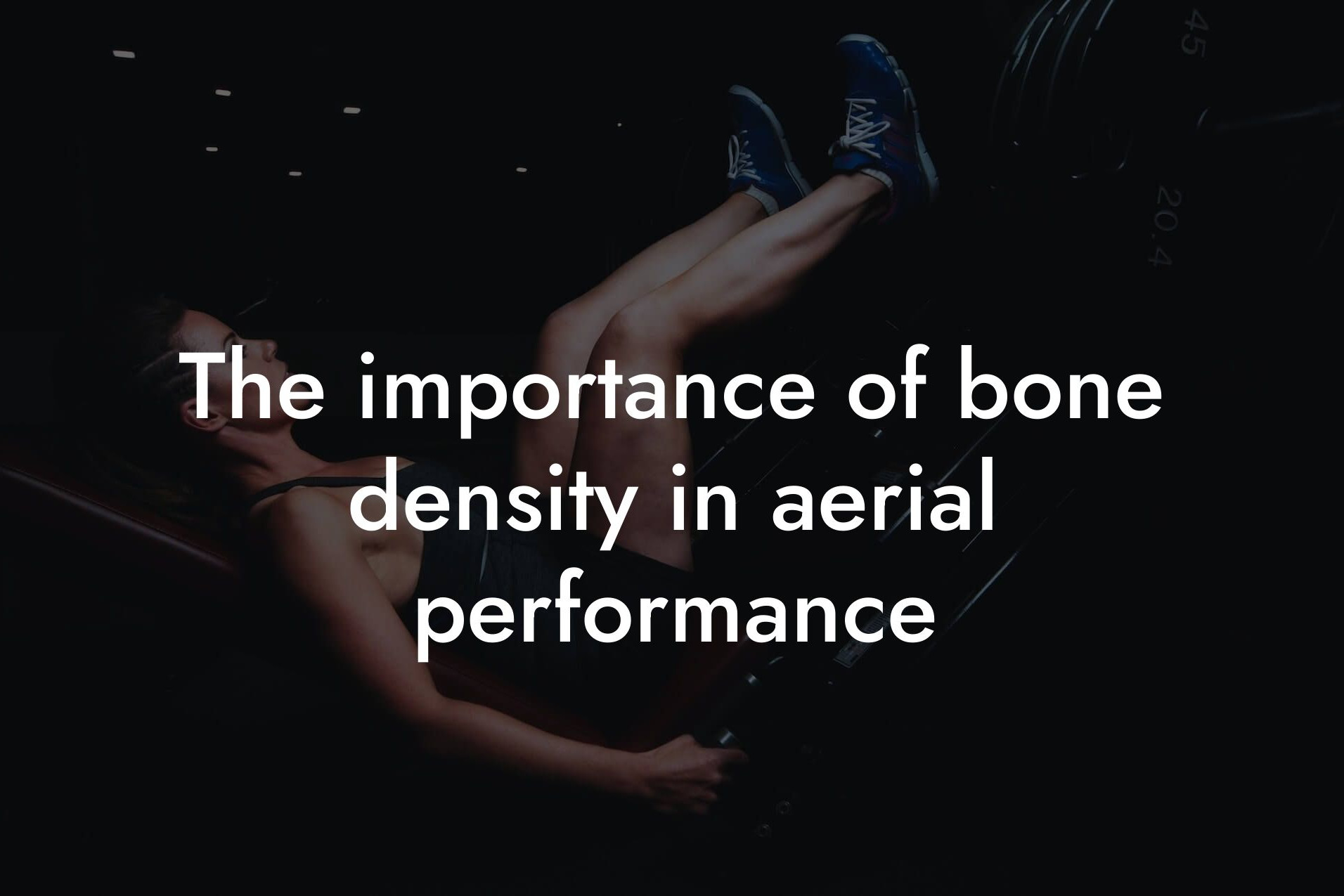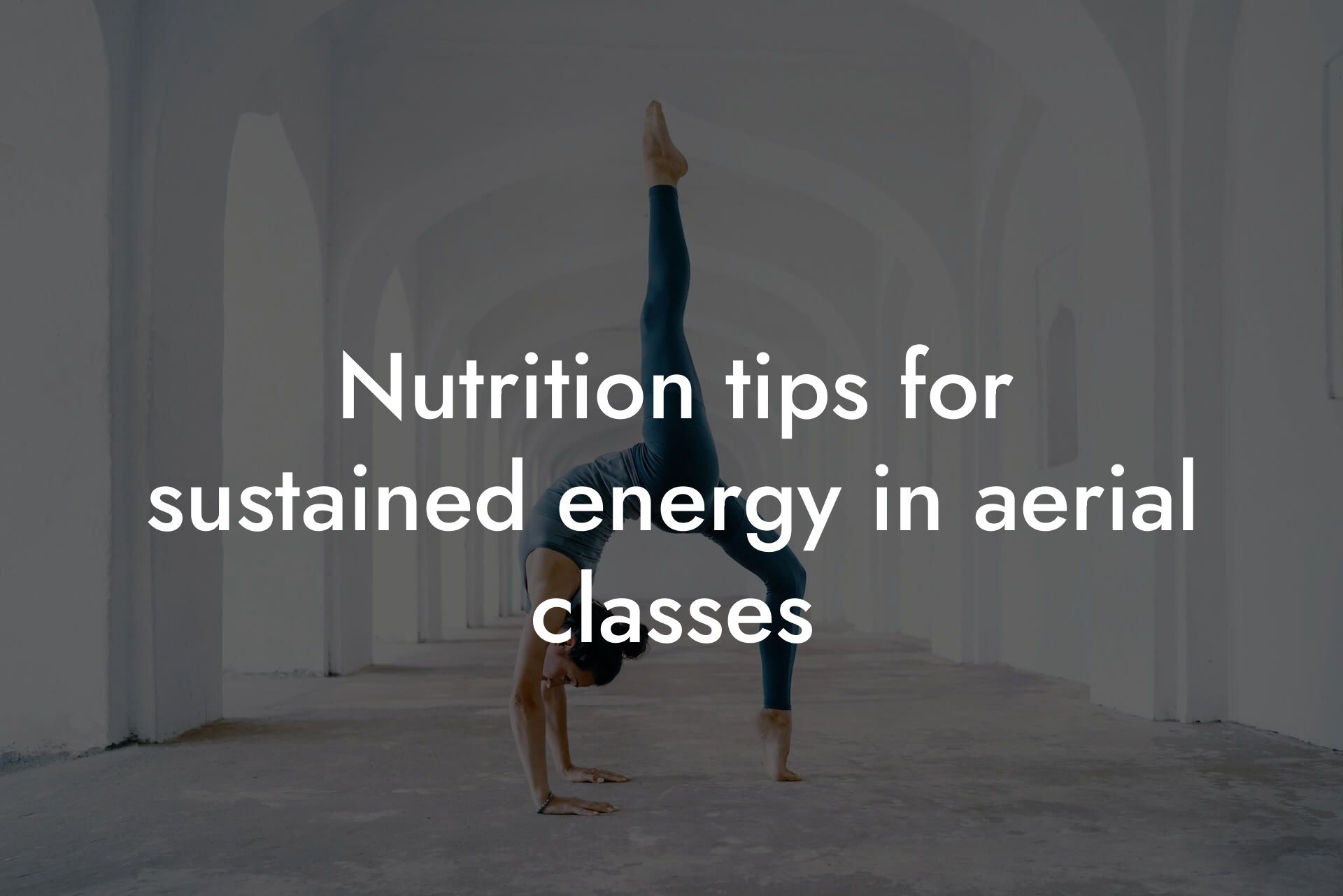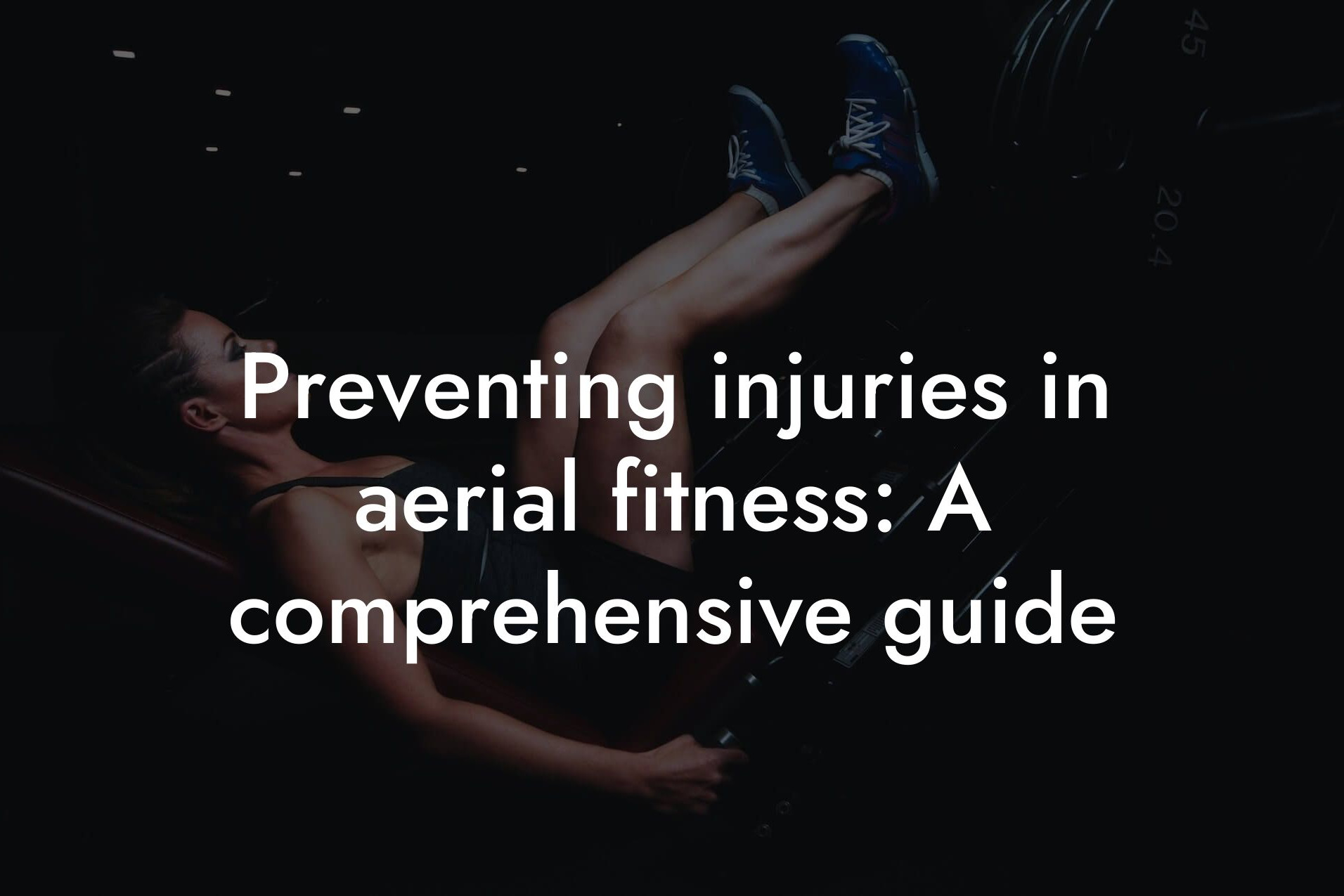As an aerial artist, having a strong core is essential for executing complex movements, maintaining control, and preventing injuries. Aerial arts require a combination of strength, flexibility, and coordination, and a weak core can hold you back from reaching your full potential. In this article, we'll delve into the importance of core strength for aerial arts, discuss the benefits of improving your core, and provide a comprehensive guide on how to do so.
Table of Contents
Why Core Strength Matters in Aerial Arts
In aerial arts, your core serves as the foundation for all movements. It provides stability, support, and control, allowing you to execute intricate poses, transitions, and sequences with ease. A strong core helps you maintain proper body alignment, generates power and momentum, and enables you to absorb and distribute the forces generated by aerial movements. Without a strong core, you may struggle with:
- Maintaining proper body alignment and posture
- Generating power and control
- Absorbing and distributing forces
- Executing complex movements and transitions
- Preventing injuries and strains
The Benefits of Improving Core Strength for Aerial Arts
Improving your core strength can have a significant impact on your aerial arts performance. Some of the benefits include:
- Enhanced stability and control
- Increased power and momentum
- Improved body alignment and posture
- Reduced risk of injury and strain
- Enhanced overall performance and execution
- Improved confidence and mental focus
Core Muscle Anatomy and Function
To understand how to improve your core strength, it's essential to know the anatomy and function of the core muscles. The core consists of:
- Rectus abdominis: responsible for flexion and stabilization
- Obliques: responsible for rotation and stabilization
- Transverse abdominis: responsible for compression and stabilization
- Erector spinae: responsible for extension and stabilization
- Pelvic floor muscles: responsible for support and stabilization
These muscles work together to provide stability, support, and control for the entire body. Weakness or imbalance in any of these muscles can lead to poor posture, decreased performance, and increased risk of injury.
Exercises for Improving Core Strength
Here are some exercises to help improve your core strength for aerial arts:
- Plank: targets rectus abdominis, obliques, and transverse abdominis
- Russian twists: targets obliques
- Leg raises: targets rectus abdominis and transverse abdominis
- Superman: targets erector spinae and pelvic floor muscles
- Bird dog: targets erector spinae and pelvic floor muscles
- Pallof press: targets rotational strength and stability
Remember to start with lower reps and sets and gradually increase the difficulty as you build strength and endurance. It's also essential to engage in exercises that target the entire core, rather than just focusing on one or two muscle groups.
Incorporating Core Strengthening into Your Aerial Arts Training
To see significant improvements in your core strength, it's essential to incorporate core strengthening exercises into your regular aerial arts training. Here are some tips:
- Warm up with core exercises before aerial training
- Incorporate core exercises into your aerial sequences and routines
- Focus on engaging your core during aerial movements
- Practice core exercises regularly, ideally 2-3 times a week
- Incorporate other exercises that target the entire body, such as yoga or Pilates
Common Mistakes to Avoid
When it comes to improving core strength for aerial arts, there are some common mistakes to avoid:
- Focusing too much on aesthetics rather than functional strength
- Neglecting to engage the entire core, rather than just focusing on one or two muscle groups
- Not incorporating core exercises into regular aerial arts training
- Not listening to your body and pushing through pain or discomfort
- Not seeking guidance from a qualified instructor or trainer
Improving core strength is essential for aerial artists who want to take their performance to the next level. By understanding the importance of core strength, the benefits of improving it, and incorporating exercises and training into your routine, you can enhance your overall performance, reduce the risk of injury, and achieve your goals. Remember to be patient, persistent, and gentle with your body as you work to build a stronger core.
At Tano Performance Group, we understand the importance of having a strong core for aerial arts. Our DEXA machine provides a comprehensive body assessment, giving you the information you need to take your performance to the next level. Contact us today to learn more about how we can help you achieve your goals.
Frequently Asked Questions
What is core strength, and why is it important for aerial arts?
Core strength refers to the strength and stability of the muscles in your trunk, including your abs, obliques, and lower back. In aerial arts, a strong core is essential for maintaining control, balance, and stability while performing aerial movements and poses. It helps you to generate power, maintain proper alignment, and reduce the risk of injury.
How does core strength impact my aerial performance?
A strong core enables you to perform aerial movements with more precision, control, and confidence. It helps you to maintain proper body alignment, engage the correct muscles, and generate the necessary power to execute complex movements. Weak core muscles can lead to poor posture, decreased stability, and increased risk of injury.
What are the key muscle groups involved in core strength for aerial arts?
The primary muscle groups involved in core strength for aerial arts include the rectus abdominis, obliques, transverse abdominis, erector spinae, and latissimus dorsi. These muscles work together to provide stability, support, and control for the spine, pelvis, and entire body.
How can I improve my core strength for aerial arts?
There are several ways to improve your core strength for aerial arts, including exercises that target the specific muscle groups mentioned above. Some effective exercises include planks, crunches, leg raises, Russian twists, and bird dogs. You can also incorporate core-strengthening exercises into your daily routine, such as engaging your core during daily activities like lifting groceries or carrying children.
What are some exercises I can do to target my transverse abdominis muscle?
The transverse abdominis muscle is a deep abdominal muscle that plays a crucial role in core stability. Exercises that target this muscle include drawing-in exercises, where you engage your core and pull your belly button towards your spine, as well as exercises like planks and bird dogs that require engagement of the transverse abdominis to maintain proper form.
How often should I practice core exercises to see improvement in my aerial performance?
Aim to practice core exercises 2-3 times per week, with at least 2-3 sets of 8-12 repetitions per exercise. Consistency is key, so try to make core exercises a regular part of your training routine. As you progress, you can increase the frequency, intensity, and duration of your workouts.
Can I improve my core strength without doing crunches?
Absolutely! While crunches are a popular exercise for building core strength, they're not the only option. Other exercises like planks, leg raises, and Russian twists can be just as effective, if not more so, for building core strength. Additionally, functional exercises like carrying heavy objects, doing yard work, or playing sports can also help improve your core strength.
How does flexibility and mobility impact my core strength for aerial arts?
Flexibility and mobility are essential for maintaining proper alignment and range of motion in aerial arts. When you have good flexibility and mobility, you can move more efficiently and effectively, which reduces the strain on your core muscles. This, in turn, helps to improve your overall core strength and stability.
What are some common mistakes to avoid when training for core strength in aerial arts?
Common mistakes to avoid include arching your back, using momentum to complete exercises, and neglecting to engage your core during exercises. It's also important to avoid overtraining, which can lead to fatigue, injury, and decreased performance.
How can I incorporate core strength training into my aerial practice?
Try incorporating core exercises into your warm-up or cool-down routine, or use them as active rest between aerial exercises. You can also modify aerial exercises to make them more core-intensive, such as adding leg lifts or twists to your aerial poses.
What are some signs that I need to improve my core strength for aerial arts?
Signs that you need to improve your core strength for aerial arts include struggling to maintain proper alignment, experiencing fatigue or strain in your back or shoulders, or noticing decreased control and precision in your movements.
Can I improve my core strength with bodyweight exercises alone?
Yes, bodyweight exercises can be an effective way to improve your core strength for aerial arts. In fact, many aerial artists rely solely on bodyweight exercises to build the strength and control they need for their performances. However, it's also important to incorporate other forms of training, such as flexibility and mobility exercises, to ensure overall fitness and well-roundedness.
How does core strength impact my overall physical fitness and well-being?
Core strength has a profound impact on overall physical fitness and well-being. It improves posture, reduces back pain, enhances athletic performance, and even boosts confidence and self-esteem. Strong core muscles also help to support your internal organs, improve digestion, and reduce the risk of injury.
What are some common injuries associated with weak core strength in aerial arts?
Common injuries associated with weak core strength in aerial arts include lower back strain, shoulder injuries, and wrist or ankle sprains. Weak core muscles can also contribute to poor posture, fatigue, and decreased performance.
How can I modify core exercises to accommodate my fitness level or physical limitations?
Modify core exercises by reducing the intensity, duration, or frequency of your workouts. You can also try adapting exercises to accommodate physical limitations, such as using a stability ball or resistance band to reduce the strain on your joints.
Can I improve my core strength for aerial arts with Pilates or yoga?
Absolutely! Pilates and yoga can be excellent ways to improve your core strength for aerial arts. Both practices focus on building core strength, improving flexibility and mobility, and enhancing overall body awareness and control.
How does core strength impact my mental toughness and focus in aerial arts?
Core strength has a profound impact on mental toughness and focus in aerial arts. When you have a strong core, you feel more confident, stable, and in control, which enables you to perform with greater precision, focus, and mental toughness.
What are some tips for incorporating core strength training into my busy schedule?
Try incorporating core exercises into your daily routine, such as doing a few sets of planks or crunches during commercial breaks while watching TV. You can also try breaking up your workouts into shorter sessions throughout the day, or finding a workout buddy to help keep you motivated and accountable.
How does core strength impact my overall aesthetic and physique in aerial arts?
Core strength has a significant impact on your overall aesthetic and physique in aerial arts. A strong core enables you to maintain proper alignment, engage the correct muscles, and generate the necessary power to execute complex movements, which can enhance your overall physique and aesthetic.
Can I improve my core strength for aerial arts with resistance training?
Yes, resistance training can be an effective way to improve your core strength for aerial arts. Resistance bands, dumbbells, or kettlebells can add an extra challenge to your core exercises, helping to build strength, power, and control.
What are some common myths about core strength training for aerial arts?
Common myths about core strength training for aerial arts include the idea that crunches are the only effective exercise for building core strength, or that you need to have a six-pack to have strong core muscles. Another myth is that core strength training is only for beginners, when in fact, it's essential for aerial artists of all levels.
Here are some related articles you might love...
- The importance of bone density in aerial performance
- Nutrition tips for sustained energy in aerial classes
- Preventing injuries in aerial fitness: A comprehensive guide
- Strength training tips specific to aerial fitness
- How body composition affects performance in aerial fitness
- Maintaining muscle recovery with aerial training
- Reducing body fat for improved strength-to-weight ratio in aerial arts
- Using DEXA scans to monitor progress in aerial fitness
- Balancing strength and flexibility in aerial fitness
Zak Faulkner
Zak Faulkner is a leading authority in the realm of physical health and body composition analysis, with over 15 years of experience helping professionals optimise their fitness and well-being. As one the experts behind Tano Performance Group, Zak has dedicated his career to providing in-depth, science-backed insights that empower clients to elevate their physical performance and overall health.
With extensive knowledge of DEXA technology, Zak specializes in delivering comprehensive body assessments that offer precise data on body fat, muscle mass, bone density, and overall physique. His expertise enables individuals to make informed decisions and achieve their fitness goals with accuracy and confidence. Zak’s approach is rooted in a deep understanding of human physiology, combined with a passion for helping clients unlock their full potential through personalised strategies.
Over the years, Zak has earned a reputation for his commitment to excellence, precision, and client-focused service. His guidance is trusted by top professionals who demand the best when it comes to their health. Whether advising on fitness programs, nutritional strategies, or long-term wellness plans, Zak Faulkner’s insights are a valuable resource for anyone serious about taking their health and fitness to the next level.
At Tano Performance Group, Zak continues to lead our Content Team revolutionising how professionals approach their physical health, offering unparalleled expertise that drives real results.




